






Our Miami deep plane facelift can restore a youthful appearance and allow you to maintain your looks for a long time.
The aesthetic outcome after a deep plane facelift is superior to that of the traditional facelift, or rhytidectomy. Rather than the skin pulling and removal of a standard facelift, the fat layers and muscles are released and moved. While it is a more invasive procedure, the results are worth it.
Learn more about deep plane facelift from our Miami quadruple board-certified plastic surgeon, Alexander Zuriarrain, MD, FACS, founder of Zuri Plastic Surgery.
Rather than just operating on the skin, as with a standard facelift, in a deep plane facelift the surgeon operates on the superficial muscular aponeurotic system (SMAS). The SMAS lies beneath the face's supportive layer. It is a connective tissue layer between the skin and underlying facial muscles.
The neck, jawline, and cheeks are smoothed by lifting and then tightening the SMAS.
A deep plane facelift is also referred to as a muscle lift.
Deep plane facelifts produce results that last much longer than a traditional lift. In fact, the results may last ten years longer (or more) than a traditional facelift.
In a standard lift, the lack of lifting of the SMAS can make the skin appear too tight. That tightness is a giveaway that the patient has had work done. That's not the case with a deep plane lift.
A deep plane facelift does more than lift the jowls and neck. It elevates the muscles and fat pads of the cheeks. Laugh lines (formally known as nasolabial folds) are reduced when this area is lifted. No other type of facelift more successfully flattens these lines. The surgery causes the face to regain a youthful shape. The entire effect is more natural.
Most people in good health are candidates for a deep plane facelift. However, pregnant women should wait until after their babies are born. Also, those with a keloid scarring history are not good deep plane lift candidates.
Smokers should quit before undergoing this type of lift. In addition, excessive alcohol or recreational drug use is prohibited before the surgery and during recovery.
You will receive general anesthesia, so you are completely under during the surgery. The face is also injected with a mixture of lidocaine, epinephrine, and tranexamic acid to keep bruising to a minimum.
Small incisions are made, allowing for the cutting and releasing of various ligaments below the SMAS layer. Deep tissue manipulation takes place. The skin muscle flap is sutured to obtain a more youthful positioning.
The procedure takes between two and three hours.
Recovery for a deep plane facelift does not take longer than that of a standard procedure. The term "deep plane" leads some patients to believe that the surgery is more traumatic, but that is not the case. In fact, the deep plane facelift often heals more quickly compared to a traditional facelift. That's due to maintaining more of the skin's blood supply because the blood muscles between the skin and muscles don't get severed in a deep plane facelift.
Expect substantial bruising and swelling after the surgery. This will disappear over several days. For the first week or two post-surgery, you must wear a compression garment and have neck support. Drains are present for about one week.
Expect to wait at least three weeks after a deep plane lift to resume normal activities. Additionally, avoid strenuous activity for six weeks or until cleared by your surgeon.
Results are apparent early on, but it can take a few months to experience the full effect of a deep plane facelift. The patient appears noticeably younger and rejuvenated. Cheek volume and elevation are restored. There is little, if any, visible scarring.
While the results are longer lasting than with a traditional facelift, much will depend on factors such as sun exposure and overall health.
You may feel tightness around the area of the chin implant immediately following surgery due to the body’s normal swelling response. Discomfort after surgery is typically minimal and easily controlled with pain medication or cold compresses. You might also notice a change in sensation in your chin once the local anesthetics wear off. This is perfectly normal as sensory nerves close to the implant adjust to their new, tighter surroundings.
For more information on deep plane facelifts Miami quadruple board-certified plastic surgeon, Alexander Zuriarrain, MD, FACS, at Zuri Plastic Surgery can answer any questions or address any concerns you may have during a consultation. Deep plane facelifts are more challenging than other facelifts, requiring a highly skilled surgeon, such as Dr. Z, to perform them.
Deep plane facelifts are performed under anesthesia. The doctor will prescribe pain medication during the recovery period.
As is the case with any surgery, risks include infection, bleeding, and swelling. However, there is a higher potential for nerve damage with a deep plane facelift than with a standard rhytidectomy.
Your provider will discuss the costs of the deep plane surgery with you, including payment plans. Because the technique is more complex and requires advanced surgical training, a deep plane facelift is more expensive than a traditional facelift.
Since a deep plane facelift is a cosmetic procedure, insurance will not cover it.
A deep plane facelift differs from a SMAS facelift in that the skin and underlying layers get raised together, rather than separately with SMAS.
The deep plane facelift can correct neck issues, which is not the case with SMAS.
As noted, the SMAS facelift is similar to a deep plane facelift in many aspects. It is considered a less invasive procedure, but deep plane surgery produces the finest results.
Because you receive general anesthesia, someone should drive you home after release. You cannot drive yourself home.
Get a one on one consultation with Dr. Z in his beautiful practice in Miami, FL
7540 SW 61 Ave, South Miami, FL 33143






